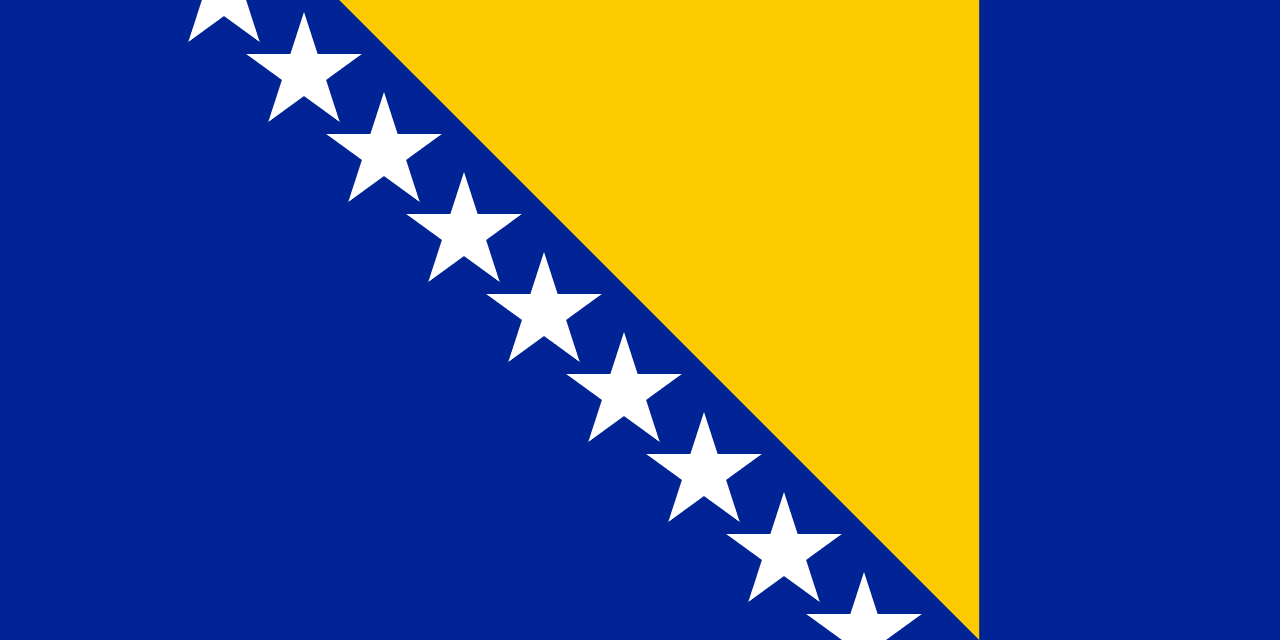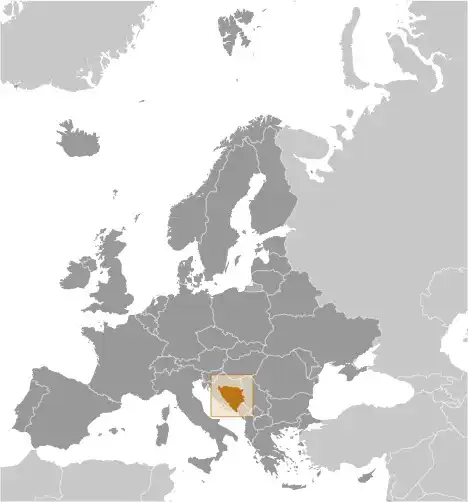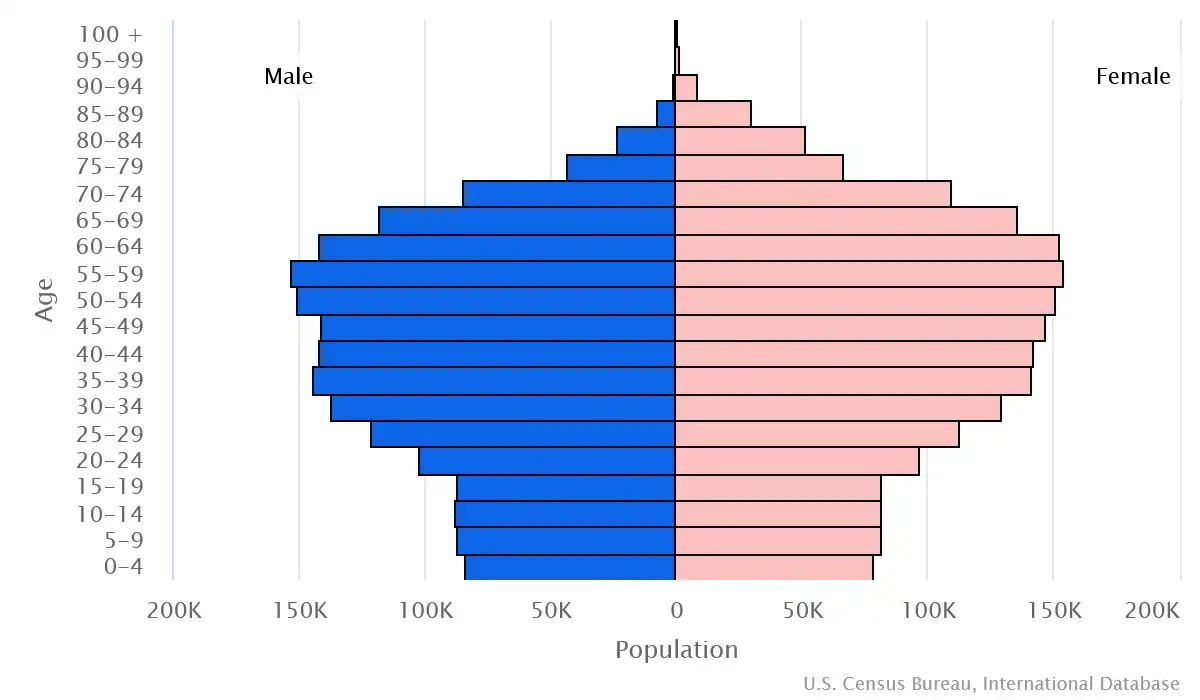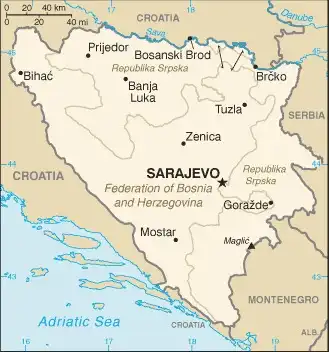
Bosnia and Herzegovina Country Profile
Key Facts of Bosnia and Herzegovina

| Government type: | parliamentary republic |
| Capital: | Sarajevo |
| Languages: | Bosnian (official) 52.9%, Serbian (official) 30.8%, Croatian (official) 14.6%, other 1.6%, no answer 0.2% (2013 est.) |
Bosnia and Herzegovina Demographic Data
Ethnic Groups in Bosnia and Herzegovina(2013 est.)
Religious Groups in Bosnia and Herzegovina (2013 est.)
Age pyramid of Bosnia and Herzegovina

Bosnia and Herzegovina Economy Statistics
Economic overview of Bosnia and Herzegovina
import-dominated economy; remains consumption-heavy; lack of private sector investments and diversification; jointly addressing structural economic challenges; Chinese energy infrastructure investments; high unemployment; tourism industry impacted by COVID-19
Bosnia and Herzegovina Real GDP (purchasing power parity) in Billion $
Bosnia and Herzegovina Real GDP per capita in $
Bosnia and Herzegovina's Exports & Imports in billion $
Top 5 Import Partnerin 2022 (52%) of Bosnia and Herzegovina
Top 5 Import Commodities in 2022 of Bosnia and Herzegovina
- refined petroleum ⛽
- aluminum 🪙
- garments 👕
- coal ⚫
- cars 🚗
Top 5 Export Partnerin 2022 (60%) of Bosnia and Herzegovina
Top 5 Export Commodities in 2022 of Bosnia and Herzegovina
- aluminum 🪙
- electricity ⚡
- footwear 👞
- garments 👕
- plastic products ♻️
Geography of Bosnia and Herzegovina
Map of Bosnia and Herzegovina

Land and Water Distrubtion of Bosnia and Herzegovina
Natural Resources of Bosnia and Herzegovina
- coal ⚫
- iron ore ⛓️
- antimony 🏺
- bauxite 🪨
- copper 🟧🪙
- lead 🪙
- zinc 🔩
- chromite 🪨
- cobalt 🪙
- manganese 🪙
- nickel 🪙
- clay 🧱
- gypsum ⚪🪨
- salt 🧂
- sand 🏜️
- timber 🌲
- hydropower 💧⚡
Climate inBosnia and Herzegovina
hot summers and cold winters; areas of high elevation have short, cool summers and long, severe winters; mild, rainy winters along coast
History of Bosnia and Herzegovina - a Summary
After four centuries of Ottoman rule over Bosnia and Herzegovina, Austria-Hungary took control in 1878 and held the region until 1918, when it was incorporated into the newly created Kingdom of Serbs, Croats, and Slovenes. After World War II, Bosnia and Herzegovina joined the Socialist Federal Republic of Yugoslavia (SFRY).
Bosnia and Herzegovina declared sovereignty in October 1991 and independence from the SFRY on 3 March 1992 after a referendum boycotted by ethnic Serbs. Bosnian Serb militias, with the support of Serbia and Croatia, then tried to take control of territories they claimed as their own. From 1992 to 1995, ethnic cleansing campaigns killed thousands and displaced more than two million people. On 21 November 1995, in Dayton, Ohio, the warring parties initialed a peace agreement, and the final agreement was signed in Paris on 14 December 1995.
The Dayton Accords retained Bosnia and Herzegovina's international boundaries and created a multiethnic and democratic government composed of two entities roughly equal in size: the predominantly Bosniak-Bosnian Croat Federation of Bosnia and Herzegovina and the predominantly Bosnian Serb-led Republika Srpska (RS). The Dayton Accords also established the Office of the High Representative to oversee the agreement's implementation. In 1996, the NATO-led Stabilization Force (SFOR) took over responsibility for enforcing the peace. In 2004, European Union peacekeeping troops (EUFOR) replaced SFOR. As of 2022, EUFOR deploys around 1,600 troops in Bosnia in a peacekeeping capacity. Bosnia and Herzegovina became an official candidate for EU membership in 2022.
